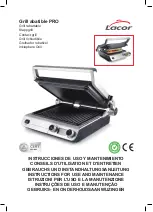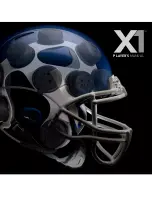
8
Ge
tt
in
g S
tar
te
d
m
DANGER: Do not use a flame to check for gas
leaks. Be sure there are no sparks or open
flames in the area while you check for leaks.
m
DANGER: Leaking gas may cause a fire or
explosion.
m
DANGER: Do not operate the grill if there is a
gas leak present.
D
E
What is a Leak Check?
Once the hose is properly connected, it is necessary
to perform a leak check. A leak check is a reliable way
to verify that gas is not escaping after you connect the
hose to the gas supply. The fuel system in your grill
features factory-made connections that have been
thoroughly checked for gas leaks and the burners have
been flame-tested.
WEBER recommends performing a thorough leak
check after assembly, as well as annually. The
following fittings should be tested:
• Where the gas hose connects to the gas supply.
• Where the gas hose connects to the bulkhead.
• Where the bulkhead connects to the corrugated gas
line.
Checking for Gas Leaks
1) Wet fittings
(D)
with a soap and water solution,
using a spray bottle, brush or rag. You can make
your own soap and water solution by mixing 20%
liquid soap with 80% water; or, you can purchase
leak check solution in the plumbing section of any
hardware store.
2) Turn the gas supply valve on.
3) If bubbles appear there is a leak:
a) If the leak is at the gas supply
(E)
. Turn off the
gas. DO NOT OPERATE THE GRILL.









































